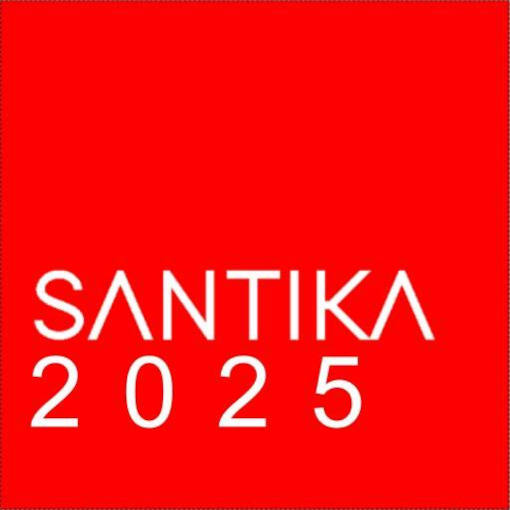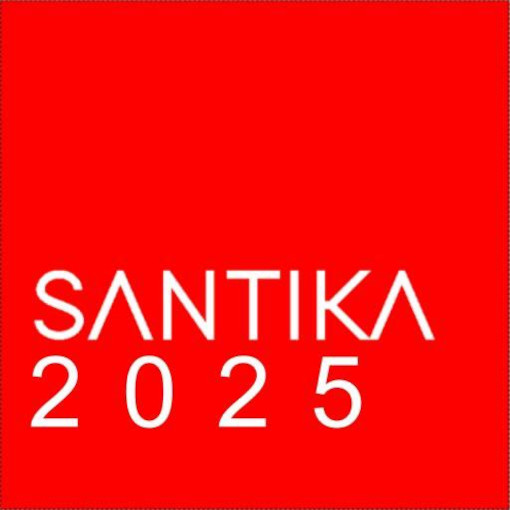EFEK KEBEBASAN KREATIF PEMAIN PADA PROSES PEMBELAJARAN DI GIM EDUKASI: PENELITIAN EMPIRIS AWAL
DOI:
https://doi.org/10.33005/santika.v2i0.130Keywords:
gim edukasi, kebebasan kreatif, skala EGameFlow, analisis korelasi, skala GUESSAbstract
Gim edukasi terus berkembang pesat di abad ke-21. Salah satu keunggulan gim adalah memberi wadah bagi pemain untuk berkreasi di sebuah dunia fiktif, yang pada akhirnya dapat menjadi sarana pembelajaran aktif yang efektif. Walau demikian, faktor kebebasan kreatif pemain di gim edukasi belum banyak dipahami. Penelitian ini dilakukan untuk mengeksplorasi faktor tersebut secara empiris dan mendetail. Untuk itu, sebuah gim edukasi berjenis bermain-peran dikembangkan dan diuji sejumlah mahasiswa. Gim tersebut menampilkan sejumlah pelajaran yang diintegrasikan dengan jalan permainan dan narasi ceritanya. Pelajaran-pelajaran tersebut terbagi ke dalam tiga topik yang terkait jurusan informatika, dan topik-topik itu berbeda dari segi keakraban, kemudahan dipahami, dan kemudahan diingat. Komponen-komponen gimnya mendukung empat aspek kebebasan kreatif: imajinasi, ekspresi diri, eksplorasi, dan rasa penasaran. Sebuah kuesioner yang didasarkan pada skala GUESS dan EGameFlow mengumpulkan data kuantitatif terkait keempat aspek kebebasan kreatif dan kualitas proses pembelajaran pemain. Analisis terhadap korelasi-korelasi di antara variabel-variabel itu menghasilkan temuan-temuan menarik terkait hubungan di antara kebebasan kreatif dan proses pembelajaran, yang kemudian diekstrak menjadi sejumlah prinsip desain yang berguna bagi pengembang maupun pengguna gim edukasi.
References
[2] M. Qian dan K. R. Clark, “Game-based Learning and 21st century skills: A review of recent research,” Computers in Human Behavior, vol. 63, hal. 50–58, 2016.
[3] P. Kaimara dan I. Deliyannis, “Why Should I Play This Game? The Role of Motivation in Smart Pedagogy,” di Didactics of Smart Pedagogy, Cham: Springer International Publishing, 2019, hal. 113–137.
[4] Z. Yu, M. Gao, dan L. Wang, “The Effect of Educational Games on Learning Outcomes, Student Motivation, Engagement and Satisfaction,” Journal of Educational Computing Research, vol. 59, no. 3, hal. 522–546, Jun 2021.
[5] J. Hamari, D. J. Shernoff, E. Rowe, B. Coller, J. Asbell-Clarke, dan T. Edwards, “Challenging games help students learn: An empirical study on engagement, flow and immersion in game-based learning,” Computers in Human Behavior, vol. 54, hal. 170–179, 2016.
[6] B. Patzer, B. Chaparro, dan J. R. Keebler, “Developing a Model of Video Game Play: Motivations, Satisfactions, and Continuance Intentions,” Simulation & Gaming, vol. 51, no. 3, Jun 2020.
[7] P. W. Atmaja dan S. Sugiarto, “Balancing Entertainment, Cost, and Educational Strength: A Design Framework for Medium-Coupling Educational Games,” Kinetik: Game Technology, Information System, Computer Network, Computing, Electronics, and Control, vol. 6, no. 1, hal. 27–40, Feb 2021.
[8] J. N. Proulx, M. Romero, dan S. Arnab, “Learning Mechanics and Game Mechanics Under the Perspective of Self-Determination Theory to Foster Motivation in Digital Game Based Learning,” Simulation and Gaming, vol. 48, no. 1, hal. 81–97, 2017.
[9] L. Nadolny, A. Valai, N. J. Cherrez, D. Elrick, A. Lovett, dan M. Nowatzke, “Examining the characteristics of game-based learning: A content analysis and design framework,” Computers & Education, vol. 156, Okt 2020.
[10] D. Muriel dan G. Crawford, “Video Games and Agency in Contemporary Society,” Games and Culture, vol. 15, no. 2, hal. 138–157, Mar 2020.
[11] E. G. Peterson dan J. Cohen, “A Case for Domain-Specific Curiosity in Mathematics,” Educational Psychology Review, vol. 31, no. 4, hal. 807–832, Des 2019.
[12] T. Day dan J. Zhu, “Agency informing techniques: Communicating player agency in interactive narratives,” di Proceedings of the 12th International Conference on the Foundations of Digital Games, 2017.
[13] F. Ke, “Designing and integrating purposeful learning in game play: a systematic review,” Educational Technology Research and Development, vol. 64, no. 2, hal. 219–244, 2016.
[14] M. Taub, R. Sawyer, A. Smith, J. Rowe, R. Azevedo, dan J. Lester, “The agency effect: The impact of student agency on learning, emotions, and problem-solving behaviors in a game-based learning environment,” Computers & Education, vol. 147, Apr 2020.
[15] V. Garneli, K. Patiniotis, dan K. Chorianopoulos, “Integrating Science Tasks and Puzzles in Computer Role Playing Games,” Multimodal Technologies and Interaction, vol. 3, no. 3, Jul 2019.
[16] J. P. Zagal dan S. Deterding, “Definitions of ‘Role-Playing Games,’” di Role-Playing Game Studies: Transmedia Foundations, Routledge, 2018, hal. 19–51.
[17] H. Nguyen, E. Harpstead, Y. Wang, dan B. M. McLaren, “Student Agency and Game-Based Learning: A Study Comparing Low and High Agency,” di Artificial Intelligence in Education. AIED 2018. Lecture Notes in Computer Science, vol 10947, 2018, hal. 338–351.
[18] R. Sawyer, A. Smith, J. Rowe, R. Azevedo, dan J. Lester, “Is More Agency Better? The Impact of Student Agency on Game-Based Learning,” di Artificial Intelligence in Education. AIED 2017. Lecture Notes in Computer Science, vol 10331, 2017, hal. 335–346.
[19] J. Mercier, I. L. Avaca, K. Whissell-Turner, A. Paradis, dan T. A. Mikropoulos, “Agency Affects Learning Outcomes with a Serious Game,” di Learning and Collaboration Technologies. Human and Technology Ecosystems. HCII 2020. Lecture Notes in Computer Science, vol 12206, 2020, hal. 267–278.
[20] A. Czauderna dan E. Guardiola, “The gameplay loop methodology as a tool for educational game design,” Electronic Journal of e-Learning, vol. 17, no. 3, hal. 207–221, 2019.
[21] F. Ke, K. Xie, dan Y. Xie, “Game-based learning engagement: A theory- and data-driven exploration,” British Journal of Educational Technology, vol. 47, no. 6, hal. 1183–1201, 2016.
[22] E. Adams, Fundamentals of Game Design, Third Edition. New Riders, 2014.
[23] L. Anderson dkk., A Taxonomy for Learning, Teaching, and Assessing: A Revision of Bloom’s Taxonomy of Educational Objectives, 1 ed. Pearson, 2000.
[24] C. Othman, Julianna & Vanathas, “Topic familiarity and its influence on listerning comprehension,” The English Teacher, vol. 34, hal. 19–32, 2004.
[25] A. Bayaga, C. Fountain, E. S. Young, A. DeMarte, dan M. J. Bossé, “Mathematics Learning Through the Lens of Language Acquisition,” lnternational Electronic Journal of Elementary Education, vol. 12, no. 1, hal. 103–113, Sep 2019.
[26] A. A. Manap, N. A. Sardan, dan R. P. M. Rias, “Interactive Learning Application in Microbiology: The Design, Development and Usability,” Procedia - Social and Behavioral Sciences, vol. 90, hal. 31–40, Okt 2013.
[27] B. Kybartas dan R. Bidarra, “A Survey on Story Generation Techniques for Authoring Computational Narratives,” IEEE Transactions on Computational Intelligence and AI in Games, vol. 9, no. 3, hal. 239–253, 2017.
[28] A. All, E. P. Nuñez Castellar, dan J. Van Looy, “Assessing the effectiveness of digital game-based learning: Best practices,” Computers and Education, vol. 92–93, hal. 90–103, 2016.
[29] M. H. Phan, J. R. Keebler, dan B. S. Chaparro, “The Development and Validation of the Game User Experience Satisfaction Scale (GUESS),” Human Factors, vol. 58, no. 8, 2016.
[30] F. L. Fu, R. C. Su, dan S. C. Yu, “EGameFlow: A scale to measure learners’ enjoyment of e-learning games,” Computers and Education, vol. 52, no. 1, hal. 101–112, 2009.
[31] L. V. García, “Escaping the Bonferroni iron claw in ecological studies,” Oikos, vol. 105, no. 3, hal. 657–663, Jun 2004.
[32] M. A. Bujang dan N. Baharum, “Sample Size Guideline for Correlation Analysis,” World Journal of Social Science Research, vol. 3, no. 1, hal. 37–46, Mar 2016.







